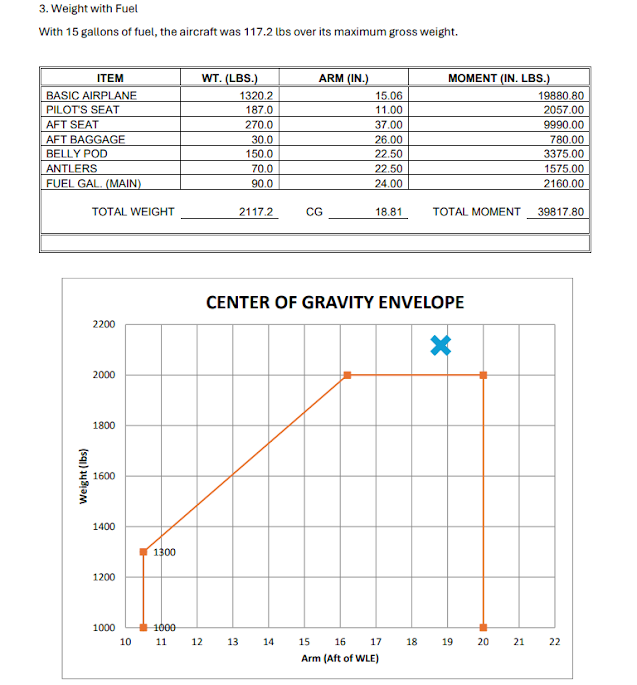- Location: St. Mary's, Alaska
- Accident Number: ANC23FA074
- Date & Time: September 12, 2023, 20:47 Local
- Registration: N109T
- Aircraft: Piper PA-18-150
- Aircraft Damage: Substantial
- Defining Event: Loss of control in flight
- Injuries: 1 Fatal
- Flight Conducted Under: Part 135: Air taxi & commuter - Non-scheduled
https://data.ntsb.gov/carol-repgen/api/Aviation/ReportMain/GenerateNewestReport/193053/pdf
https://data.ntsb.gov/Docket?ProjectID=193053
On September 12, 2023, about 2047 Alaska daylight time (AKDT), a Piper PA-18-150, N109T, sustained substantial damage when it was involved in an accident near St. Mary’s, Alaska. The pilot was fatally injured. The airplane was operated as a Title 14 Code of Federal Regulations (CFR) Part 135 on-demand flight
The pilot ferried a group of hunters into a remote wilderness area over the days leading up to the accident flight. The hunters then killed a moose, and the pilot ferried the first of two loads of meat back to the departure airport. The first ferry flight was uneventful, with the airplane departing to the north before initiating a climbing right turn toward the destination.During the second flight, the airplane was more heavily loaded with meat and the pilot had mounted a set of moose antlers to the right wing strut. The hunters observed that the accident takeoff was more labored than before; the airplane took off in the same direction, and they watched as it rolled to the right after rotation and flew out of sight behind an adjacent ridgeline. They were all initially relieved that the airplane had managed to become airborne, but it did not reappear from behind the ridge, and had crashed just beyond their view in the opposite direction of takeoff.
The initial takeoff phase of both the accident and a previous flight were captured on video. Audio analysis of the recordings indicated that the engine was operating at the same high power setting during both flights; it was not trailing any smoke or vapor. Postaccident examination of the airframe and engine did not reveal any anomalies that would have precluded normal operation.
Examination of the cargo at the accident site indicated that it was still secured within the airframe, but was not secured within the cargo pod. Review of the takeoff video indicated that the airplane did not pitch up aggressively enough during the takeoff to have caused the unsecured meat in the cargo pod to shift. The antlers were still secured to the right wing strut and did not impede any of the flight control cables.
The pilot did not use scales to weigh the cargo, and the airplane was loaded 117 lbs, or about 6%, over its maximum takeoff weight. It was so heavy that, even after consuming fuel enroute, the airplane still would have been about 180 lbs over its maximum landing weight upon reaching the destination.
The runway was situated at the crest of a hill, where terrain rapidly fell away into a valley at the northern departure end. The terrain then began to rise such that within about ¾ mile it was 400 ft higher than the runway. The wind at the time of takeoff was out of the north, and while this would have helped during the initial ground roll, once the airplane had left the runway and began a right turn over the valley to the south, it would have encountered downdrafts and mechanical turbulence induced by the terrain to the north and the runway drop-off. The downdrafts, along with the overweight airplane and the added drag and lateral weight imbalance caused by the antlers on the right wing, would likely have resulted in the airplane having insufficient power and/or control authority to maneuver above terrain.
Although carrying antlers externally is a common practice in Alaska, it requires formal FAA approval with a notation in the airplane’s airworthiness and maintenance logbooks. There was no evidence that such approval had been granted for the accident airplane.
The airplane was manufactured about 70 years before the accident and had undergone dozens of major repairs and alterations such that at the time of the accident, almost none of the original airplane existed. Although the repairs and alterations were approved through supplemental type certificates (STCs), at the time those alterations were performed the FAA did not provide guidance for installers to determine the interrelationship between all STCs incorporated into an aircraft. Therefore, the airplane’s true flight performance characteristics under normal operations, and particularly when the airplane was flying outside of its weight envelope, were unknown.
The pilot had cardiovascular disease, including focally severe narrowing of a branch coronary artery. Such disease may develop without major symptoms, but conveys an increased risk of sudden impairing or incapacitating cardiovascular events, such as arrhythmia, chest pain, or heart attack. There was no autopsy evidence that such an event occurred, although such an event would not leave reliable autopsy evidence if it occurred just before death. Based on the circumstances, there was no evidence that the pilot’s medical condition or use of medications contributed to the accident.
Although the pilot survived the initial impact, he succumbed to his injuries within a few hours. The occupiable space within the cabin was compromised by impact to such an extent that it could no longer provide protection to the pilot even with the use of a shoulder harness. Given the remote location of the accident site, which was about 400 miles from a hospital, and accessible only by air, providing the pilot with prompt medical treatment following the accident was not possible.
- Probable Cause: The pilot’s decision to operate the airplane above its maximum certificated gross weight, and his installation of an unapproved external load that degraded takeoff performance and flight characteristics resulting in a loss of airplane control during takeoff into an area of mechanical turbulence and downdrafts.








No comments:
Post a Comment